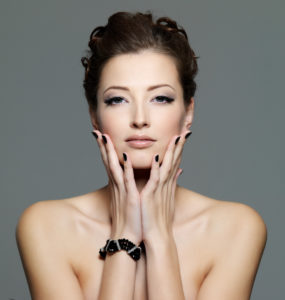When people have wanted to remove an extensive degree of sun damaged and other problematic skin, the option has usually been dermabrasion or deep chemical peels, invasive methods of resurfacing that demand extensive recovery periods. But the introduction of lasers to skin resurfacing is proving to be more popular because of the precision and easier recovery times involved.
Dr. Hetzler uses a carbon dioxide (CO2) laser in his resurfacing procedure to minimize the appearance of fine lines, especially those found around the mouth and eyes. He also uses it to treat acne scars and uneven pigmentation. When compared with dermabrasion or deep chemical peels, laser resurfacing produces less bleeding, bruising, and post-procedure discomfort.
What is laser resurfacing?
In laser resurfacing, Dr. Hetzler uses the CO2 laser to vaporize the outer layers of damaged skin. The depth of the laser penetration dictates the aggressiveness of the resurfacing. For superficial or medium resurfacing, the laser penetration is limited to the epidermis and the papillary dermis. For deeper resurfacing, the upper levels of the reticulas dermis can also be removed.
As you would assume, the deeper the penetration, the more aggressive the resurfacing and the more involved your recovery will be.
Who is right for laser resurfacing?
Lasers are great for targeting very specific areas where wrinkles form, such as around the eyes and mouth. The precision of the laser is an advantage in treating such localized areas.
Patients with olive, brown, or black skin have to be aware of the potential for pigmentation changes with any type of skin resurfacing. Dr. Hetzler will evaluate your skin type and its characteristics to decide if laser resurfacing is right for you.
The procedure
Laser resurfacing can be a quick procedure, depending on your treatment area. The procedure can last from just a few minutes up to 1.5 hours. After applying local anesthetic, the procedure begins. During the procedure, the activated laser is carefully passed back and forth over the skin until Dr. Hetzler feels the desired depth has been reached. When finished, depending on the depth of resurfacing, Dr. Hetzler may apply protective cream or ointment, possibly even light bandages that will protect the healing skin for the first week or so.
Recovery
Your recovery is based on the aggressiveness of your resurfacing. With medium and deeper resurfacing, there will be some swelling and discomfort. Ice packs and medication mitigate this. Your skin will crust over before rebuilding new healthy tissue. It’s important to not pick this crusting as that will lead to scarring. Crusting will usually finish within 10 days, but your skin can have persistent redness for several weeks. Sun protection is critical during your entire recovery.
Interested in the possibilities of laser resurfacing? Call Dr. Hetzler at 732-219-0447 and set up a consultation.


No comments yet.